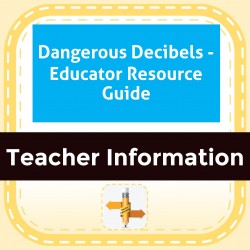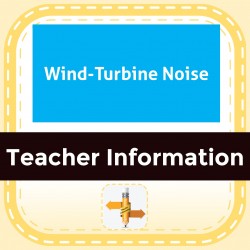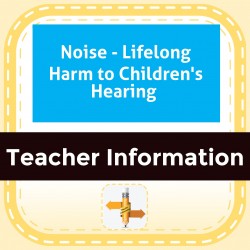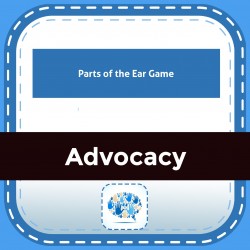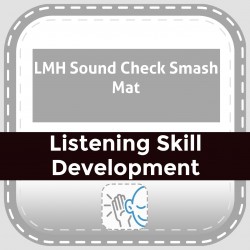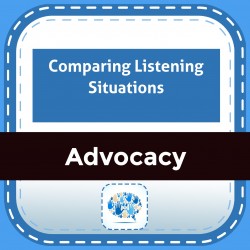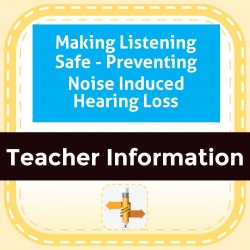Ability Levels
Categories
Resource Types
Age/Grade Range
CCSS
Anchor Standard
Speaking & Listening
Language
Reading
Dangerous Decibels - Educator Resource Guide
$ 0
Educator Resource Guide from www.dangerousdecibels.org. Provides background information for the teacher, 4 hands-on classroom activities and an extensive glossary.
Wind-Turbine Noise
$ 0
Information on the potential impact of low-frequency noise and vibration from wind turbines.
Noise - Lifelong Harm to Children's Hearing
$ 0
Informational handout on the impact of excessive noise on hearing ability and prevention.
Parts of the Ear Game
$ 5
This is a fun digital learning activity for a student to review the 3 parts of the ear. The learner identifies the function of each part, what is in each part and uses a diagram to identify parts of t
...
he ear.There are very few digital learning activities available today. Advocacy practice for students with hearing loss includes learning about hearing. As students begin to learn how they ear, identifying the 3 parts of the ear is a first step. They need lots of practice labeling different parts of the ear and identifying how they help with hearing. Learning Objective:1. The student will be able to identify functions of the 3 parts of the ear. 2. Given a diagram, the student will label the part of the ear.
Ling Madell Hewitt (LMH) Sound Check Smash Mat
$ 2
Use this SMASH Mat to help students learn and report on the LMH (Ling-Madell-Hewitt) sounds during the LMH sound check. It’s a fun, interactive way for students to demonstrate their listening skills w
...
while keeping data collection simple and engaging. Perfect for Teachers of the Deaf/Hard of Hearing, SLPs, and other educators supporting auditory development.
Comparing Listening Situations
$ 5
This interactive Google Slides activity asks students to evaluate 4 listening situations (presented in pictures and short descriptions) and rate them on a scale according to listening difficulty. Afte
...
r rating the situations, students are tasked with providing an explanation of why each situation is difficult or easy to hear. This would be a great 'stepping off' activity to begin a unit on coping skills or to evaluate how a student perceives different situations and why/how he/she feels about his/her listening abilities.There is very little digital learning activities available for remote learning today. This tool that asks students to rate situations that are difficult or easy to hear encourages introspection about a student's hearing loss. Asking student to explain why the situation is easy or hard to hear encourages them to evaluate their own listening skills and how advocacy can improve even the most difficult situation.Learning Objective:The student will be able to compare listening situations by rating them on a scale from easy to hear to hear. The student will be able to describe why a specific listening situation is difficult or easy to hear, giving support for their answers.
Making Listening Safe - Preventing Noise Induced Hearing Loss
$ 0
World Health Organization guide providing information about prevalence, impact, and prevention of noise-induced hearing loss.
 Your browser is out of date. For best experience switch to latest updated Browser.
Your browser is out of date. For best experience switch to latest updated Browser.
 Get Chrome
Get Chrome Get Edge
Get Edge Get Firefox
Get Firefox